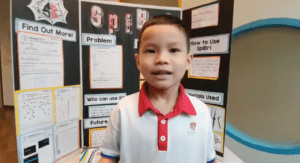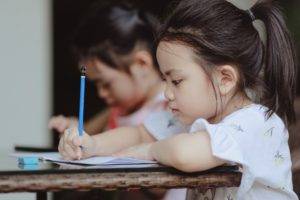Sustainability is a growing topic of concern in Singapore and around the world. Schools have started looking for ways to incorporate sustainability into their curriculum, and invention education provides a unique opportunity for learning and practising sustainability!
Invention Education
Invention education is an approach to learning that uses the process of inventing to reinforce STEM concepts through real-world applications.
The curriculum is typically designed with a focus on building invention skills, which include researching, designing, engineering, invention prototyping and testing, as well as communication. A typical class sees students invent objects and ways of doing things to solve a problem that they care about.
Sustainability in Inventing
Creativity is a core skill in inventing, so a big part of invention education is creating something new out of reusable or scrap materials. As part of designing and prototyping — both steps of the invention process — students are often encouraged to use materials such as scrap cardboard, toilet paper rolls, paper clips, old toy parts, rubber bands, and more.
When students create something, they learn to be resourceful and look for the necessary materials and tools. If a particular material or tool is inaccessible, they would have to think of an alternative method or material.
Inventing for Sustainability
Sustainability is a big problem that involves many factors. The invention process is a great way to encourage students to explore and understand the many facets of sustainability.
Some topics that can be used to explore aspects of sustainability include:
– Cleaner modes of transport (how are vehicles powered, what’s pollution, how do we reduce carbon emissions?)
– Energy (what is energy, how do we create energy, what are some renewable and non-renewable sources of energy?)
– Recycling (what is recycling, why do we recycle? How can we reduce our waste?)
Check out how we used the theme of sustainability in our invention programme! Watch this video:




